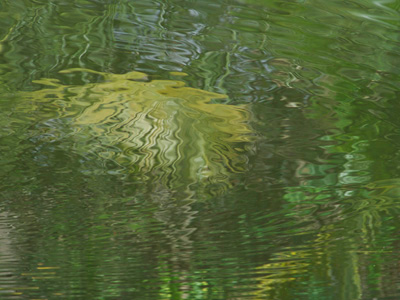alan little’s weblog
what is abstract art?
6th October 2004 permanent link
Eric Raymond is back, and on an art-rants roll with this:
There are entire genres of art that have self-destructed in the last hundred years – become drained of vitality, driven their audiences away to the point where they become nothing more than museum exhibits or hobby-horses for snobs and antiquarians.
The three most obvious examples are painting, the literary novel and classical music. After about 1910 all three of these art forms determinedly severed the connections with popular culture that had made them relevant over the previous 250 years. Their departure left vacuums to be filled; we got modern genre literature, rock music, and art photography.
Other art forms underwent near-death experiences and survived only in severely compromised forms. Jazz, running away from its roots in honky tonks and dance halls, all but strangled on its own sophistication between 1960 and 1980; it survives today primarily as smoothed-out elevator music.
And this:
If we judge by what the critical establishment promotes as "great art", most of today's artists are bad jokes. The road from Andy Warhol's soup cans to Damien Hirst’s cows in formaldehyde has been neither pretty nor edifying. Most of "fine art" has become a moral, intellectual, and esthetic wasteland in which whatever was originally healthy in the early-modern impulse to break the boundaries of received forms has degraded into a kind of numbed-out nihilism.
One question Eric touches on: what is “abstract” visual art?
[Bathsheba Grossman] will laser-etch the protein structure of your choice into glass, using the same technique as in the Large Scale Model, for prices starting at $145. These images of cloudy, intricate structure are visually beautiful enough as abstracts, but they derive their true power from being about something.
Can a literal representation of a physical object that actually exists in the real world be “abstract” art? Clearly not in the same sense as a Jackson Pollock painting. What do people mean, then, when they talk about “abstract” photographs? This is one of my favourites among my own photographs - is it “abstract”?

What about these rather better pictures by Bill Atkinson? Clearly in one sense a photograph can never be “abstract” – every photograph is an image of something that actually existed in the world at a particular moment, seen from a particular perspective under a particular light. What do we mean when we call a picture of something that actually exists an “abstract” picture?
Is it a picture where the artist’s primary intention, or the viewer’s primary interest, is more in the picture as a thing in itself than in what the picture is “of”? But then isn't that true at least to some degree in all visual art? Even in photojournalism – one of the most literal, representational artforms of all, one might think. James Nachtwey, the greatest war photographer of his generation, says
I'm trying not to create photographs that viewers will look at and think: "What a good photographer he is," or "Look what an interesting composition he can make." I want the first impact, and by far the most powerful impact, to be about an emotional, intellectual and moral reaction to what is happening to these people.
… but I’m afraid when I look his pictures, I’m just as stunned by his compositional brilliance as by the subject matter.
Oops, deep water.
related entries: Photography
all text and images © 2003–2008